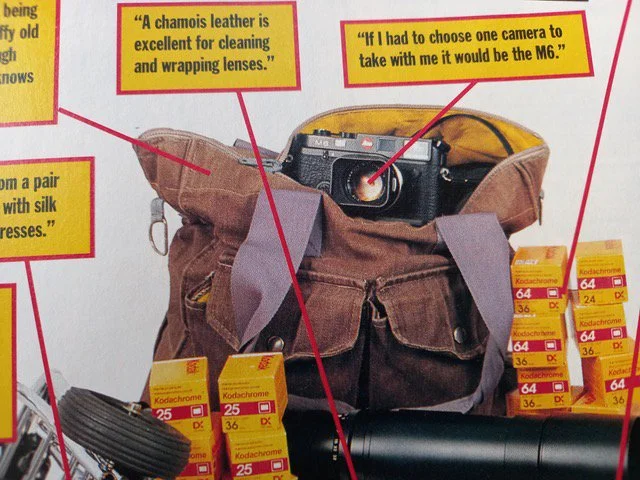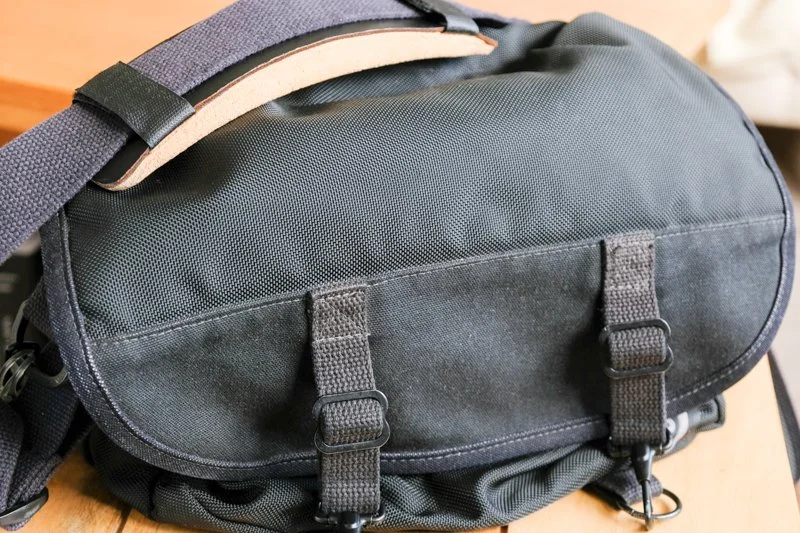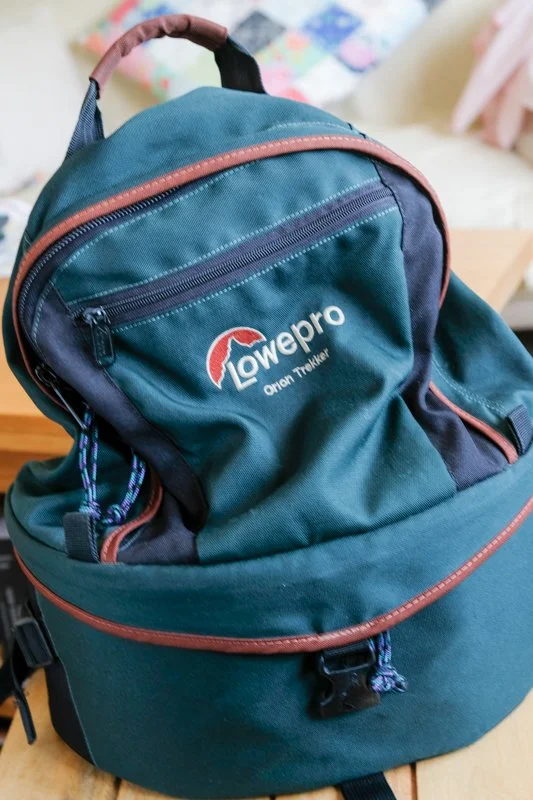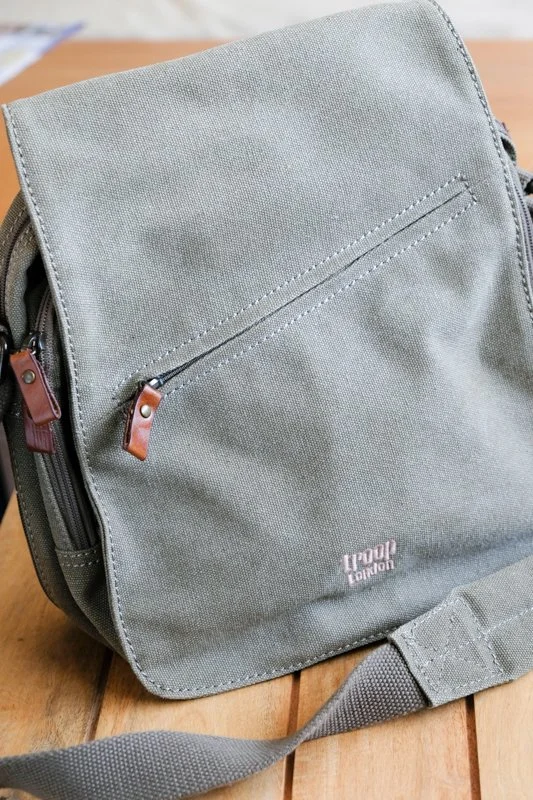Bags Bags and more Bags
Using one of my vintage Leicas and the Troop Man Bag into which it neatly fits.
Gather together a group of photographers, often amusingly referred to as a ‘frame’, ‘stop’, ‘bracket’ or ‘flash’ of photographers and other than equipment, there is one hot topic of discussion - the subject of the perfect photographic bag. Like my peers over the years, I must have spent thousands on the search and have come to the conclusion that while nothing is perfect, what a photographer needs is a ‘bag which carries cameras’ and not a ‘camera bag.’
My life in photography began towards the end of WW2 when the perfect bag wasn’t even thought of. Life was about survival, and bags were, well, just bags, in which a piece of equipment arrived designed for the camera by the maker. The quarter plate Tropical Ernimann I carried over one shoulder, came in its maker’s leather case. The case for the Speedgraphic was large enough for me to sit on. They heralded the beginning of the photographer’s problem in later life - a damaged back!
In the 60s, innovation was the name of the game and already photographers had discovered that they could have a bag to suit most of their needs - a fishing bag made by Billingham, and yes, it became the ‘must-have’ bag. I used mine until Billingham, seeing a market for camera bags, rapidly changed course and started to produce a range of purpose-made photographic camera bags. The idea was soon adopted by other manufacturers, and a whole range of bags soon appeared.
I have used a range of brand-name camera bags over the years to suit the needs of a particular job, never perfect, but functional. But when I went to China for my book on the People’s Liberation Army, I commissioned two metal cases into which fitted all the equipment I needed, and for the first time in my ‘bag’ experience, they were exactly customised for me with tailor-made inserts. On a daily basis though, I still used a small Billingham bag as I had ‘minders’ who carried my metal cases for me and from which I could choose equipment I might need for a particular daily project. Such cases nowadays have been superseded by the Pelican cases, which are lightweight and durable. Had they been around in my day, I would certainly have used them.
The dread of all photographers is to have their equipment stolen, an event which sadly happened to me when I was working in Spain, which made me rethink my options for camera bags. I needed something that no one would consider worth stealing. My delightfully outspoken mother-in-law, Daisy Barrett, owned what I found to be the almost perfect such bag and happily handed it over to me - her battered and well-used shopping bag. I had it adapted - lined, new handles, extra strong zip, and named it after its owner the ‘Daisy Bag’! It travelled all over the world with me, and I never had any other equipment stolen. It even passed the No. 64 bus test in Rome, the epicentre of the bus thieving fraternity in that beautiful city!
A profile of myself in a photographic magazine and the equipment I used including the ‘Daisy Bag
I still have a selection of bags which I have used for different purposes in the past, but none have matched the simplicity of the ‘Daisy Bag.’ With the exception of a couple of small bags, I have to admit that I now use all the others for storage. Two Billingham bags, the Rolls Royce of the camera fraternity, the American-made Domke, which in my opinion is a poor relation to Billingham, a Lowepro backpack and also a Tamrac bag.
So, back to my original conclusion, what a photographer needs is not a ‘camera bag’, but a ‘bag which carries cameras’. No matter the size or type of bag you prefer, you can customise it to suit your needs. Purchase inserts on the internet and you have a bag for yourself at a fraction of the price you would pay for a brand camera bag. Also, you are not advertising the fact that you have a lot of valuable equipment ready to be stolen.
For myself, I discovered the almost perfect bag for the senior citizen photographer, small, lightweight, inconspicuous, affordable and extremely well made - the ‘Troop man bag.’ With the small, lightweight equipment I now use - my vintage Leica cameras and my digital favourite, the Fujifilm X-Pro 2 - it has proved its worth. I would suggest to save their backs, that even younger photographers consider using these bags or similar and of course, just as innovative, if you insist on a bigger bag, the equivalent of my ‘Daisy Bag’!
Domke Bag - American made - never was a favourite of mine.
A Troop Bag - an excellent bag for a camera - small and unobtrusive
The smaller my two Billingham Bags.
The small Lowepro camera bag that I occasionally still use.
The Lowepro back pack camera bag.
Another small Troop Bag.
A very small Billingham Bag, big enough for one camera.
A large Tamrac Bag.
The larger of my two Billingham Bags.










